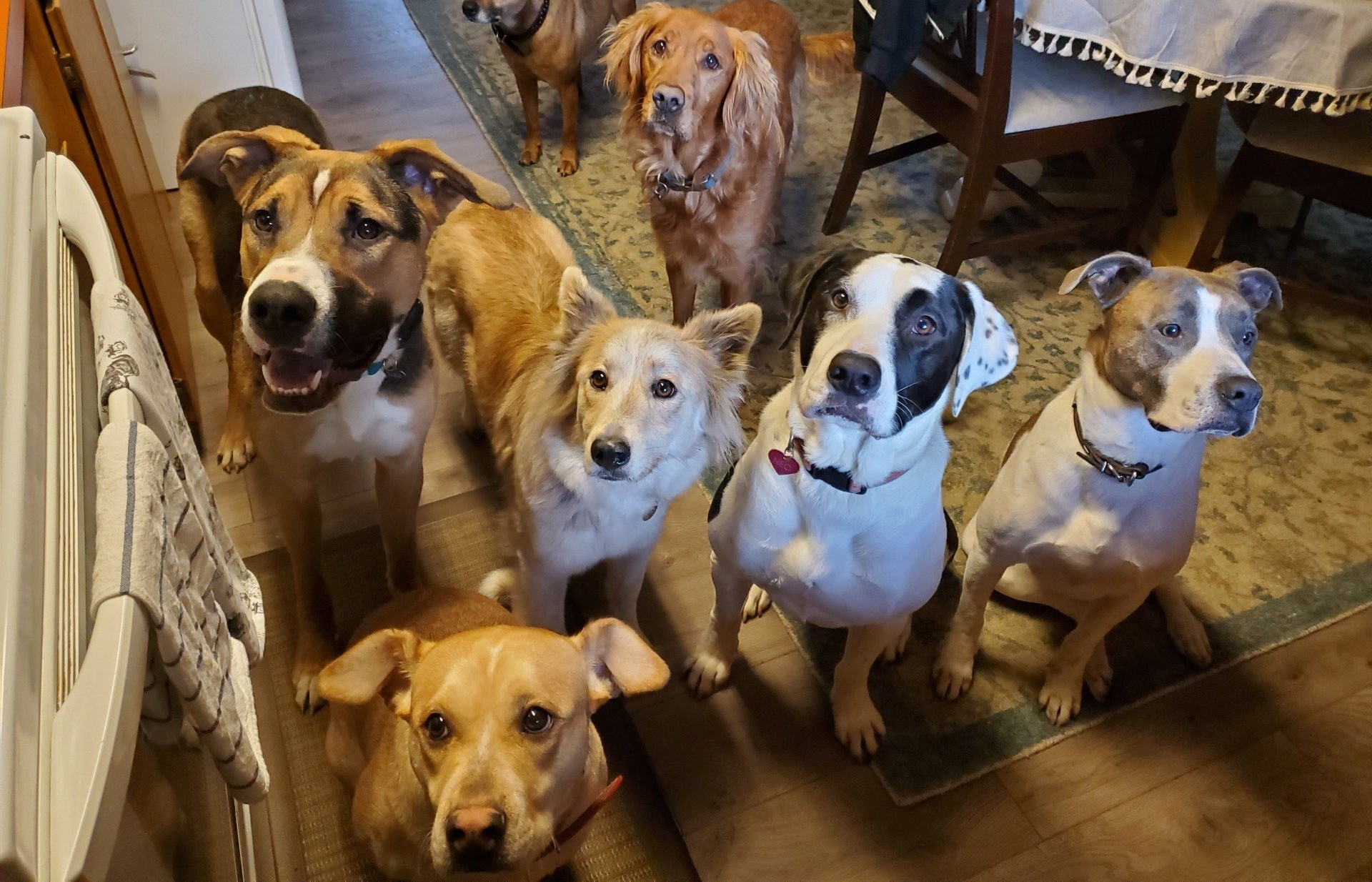Stop so being handsy!
Gina Cooley
A safe and respectful approach to greeting a canine

Putting your hand in the face of a dog as a greeting gesture is as reflexive for many people as 'hey, how are you', the difference is, dogs always answer honestly.
Most people think extending their hand for the dog to 'sniff' you is the appropriate way to introduce yourself. Dogs have a sense of smell that is at least 10,000 times more acute than ours, so why do we think we need to put our hand in their face for them to get a good whiff? If they don't know us in the first place, why would smelling our hand for a few seconds make them suddenly like us? In addition to that, when is a hand in someone or something's face ever considered a respectful way to greet someone? As a long term foster and overseer of adoption events, I have consistently seen parents tell their children, 'No Sally, make sure you extend your hand first so the dog can sniff you', when approaching a dog. Why are parents continuously trying to feed their children to dogs?? That may be a topic for another time. ;)
For now, let's evaluate some of the things we do when we greet a dog so we can see where we go wrong and start approaching dogs in a way that encourages a successful outcome. Let's start from the beginning, dogs are animals, descendants from wolves, domesticated but nonetheless, they are genetically inclined to use their mouths when they are uncomfortable, excited or even feeling playful. Any dog has the propensity to growl, snap or bite so having a healthy respect for a dog's space and remembering some simple tips when you approach, is going to get everyone started off on the right foot.
When a person encounters a new dog and they intend to greet them whether on the street, at a friends house or searching for their new family member it usually goes something like this. They spot the dog, stop dead in their tracks, eyes get wide, smiles get big, unblinking, staring they may even start talking baby talk to the unsuspecting pup, they either very slowly or hurriedly walk in the dogs direction and stand looming over the dog and then it happens.. .they reach out their hand for the obligatory 'sniff'.
Any of the above is enough for many dogs to have a meltdown and if we compare our actions to how a dog greets another dog we will quickly see why we are going wrong. The way a human tends to greet a dog is more like what we would see in a dog when they are headed in to a conflict. If we think about that for a moment, think about how dogs act when they are stalking their prey, or ready to challenge each other. They see it, they stop, they slowly creep up or rush up on the other party, they might show their teeth if they are challenging each other, they are wide eyed and bursting with energy and then..,you see where I am headed?
So what IS the proper way to greet a dog? Remembering BARC will allow for mutually respectful greetings between human and canine
Body Language
-Staring is not caring in the world of canines (and many humans), staring at a stranger is considered rude and makes everyone feel extremely uncomfortable.
-When approaching the dog keep your eyes relaxed and averted.
-Smile with your eyes not your teeth, squinty eyes and a relaxed smile is preferable and generally communicates calm confidence. Do not lean towards the dog or over the dog at any time.
Approach
-Be sure to ask first from a distance and approach calmly. Our exuberance can either stress the dog or overly excite the dog.
-Do not feed the dog, the only person that should ever give the dog food is the person holding the leash.
Reaching is Rude
-Do not reach for the dog at any time.
Consent
-Invite the dog into your space, do not invade the dogs space. Dogs do give subtle signals that most people are not able to read so a good way to be sure the dog is consenting to the greeting is to invite them to come into your space. Pat your leg, call them over. If the dog respectfully declines your invitation, don't take it personal, like us, dogs have varying degrees of social discomfort and may still be learning to trust.
*Greeting strangers can be a very stressful experience for our dogs, especially when they are attached to us through a leash and unable to move freely during the greeting. As their owners/handlers it is our duty to advocate for our dogs. Sometimes, this means you have to get very comfortable saying 'no, you can't pet my dog'. If you and your dog are struggling with the greeting ritual, feel free to contact me for more information on how to successfully communicate leadership to your dog, so you can both get on a path to less stressful outings together.